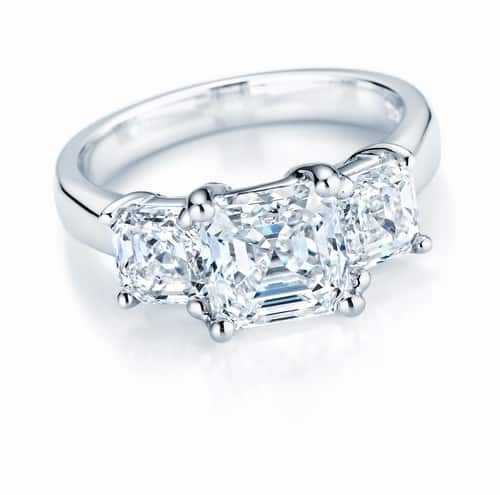Marc Nanasi with NEI Group is today’s guest blogger.
Could My Diamond ‘Break’?
It’s easy to think that diamonds are invincible, after all, they rank as the hardest substance known to man on the Moh’s scale. Unfortunately, diamonds are not without their vulnerabilities.
So, yes, diamonds can break. This comes with good news and bad news. The bad news is that no diamond is impervious to breaking, but the good news is that it is an extremely rare occurrence.

The most important step comes when selecting your diamond. Diamonds are formed within the earth and usually have identifying characteristics within them. These characteristics (otherwise known as inclusions) act as a fingerprint for your diamond, but certain types of inclusions could compromise your diamond’s structural integrity.
The most important things to watch out for are the placement and size of two particular types of inclusions: feathers and cleavages (most AGS reports describe the nature of the diamond’s inclusions, and plot them in a diagram). Both of these inclusions are preexisting natural breaks in the diamond crystal. The difference between the two is that a feather breaks against the grain of the diamonds atomic structure, and a cleavage breaks along the grain. This does not mean that you should pass on every stone displaying these types of inclusions, you should, however, take note and decide whether a piece of the diamond looks like it could snap off. Usually, the risk of breaking a diamond is greater when these types of inclusions are near an edge or point of the diamond, or when they extend to the surface of the diamond.
Diamonds break when they are subjected to impact, and sometimes, when there is a buildup of pressure inside the stone (called strain), a slight tap in just the right place (or just the wrong place) will result in the stone breaking so the pressure can escape. To make matters more interesting, most of the time there is virtually no way to tell if a diamond has internal strain. It is very rare for a diamond to break like this, but it is still important to be careful when wearing diamond jewelry. Take care to avoid wearing your jewelry if you plan to be particularly active with your hands (i.e. rock climbing, boxing, gardening). Have a safe place to keep your ring while you do the dirty work!
Diamonds are formed through intense heat and pressure, and should be durable and last more than a lifetime, but it is important to care properly for your diamond. Selecting the right diamond and caring for it will allow you to enjoy it for generations to come.